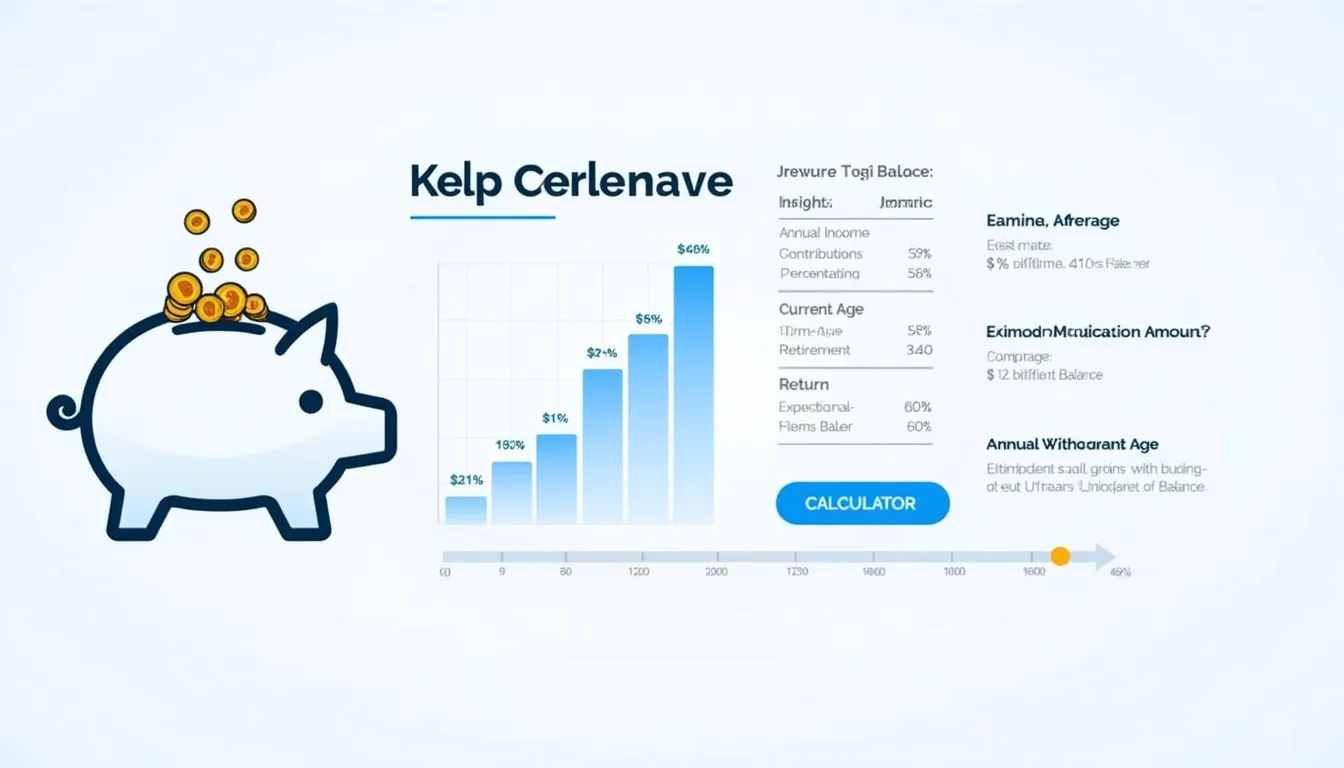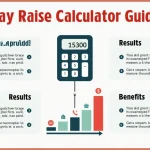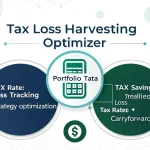401(k) Retirement Calculator
Is this tool helpful?
How to Use the 401(k) Retirement Calculator Effectively
Maximize the accuracy of your retirement savings projections by following these clear steps. Here’s how to input your details for the best results, using different sample values than those found in the calculator form:
- Enter your Annual Income: For example, if you currently earn $55,000 or $85,000 before taxes, input this in the “Annual Income” field.
- Specify your Contribution Percentage: Input the portion of your income you plan to contribute to your 401(k). Consider entering 8% or 12%.
- Enter your Current Age: Use your present age such as 30 or 45.
- Set your Age at Retirement: Specify when you want to retire, say 60 or 70.
- Enter the Expected Annual Rate of Return: Input a realistic investment growth rate like 6.5% or 8%.
- Estimate your Expected Annual Salary Increase Rate: Consider a modest growth rate such as 2% or a more optimistic rate like 4%.
- Enter your Expected Withdrawal Tax Rate: This is the tax rate you anticipate during retirement withdrawals. Examples might be 20% or 25%.
- Click “Calculate”: After filling all fields, click the “Calculate” button to view your personalized retirement savings estimate.
Following these steps ensures your 401(k) retirement projections reflect your unique financial circumstances and goals.
Introducing the 401(k) Retirement Calculator: Plan Your Financial Future with Confidence
The 401(k) Retirement Calculator is an intuitive financial planning tool designed to help you estimate the total value of your retirement savings based on your current income, savings habits, and investment expectations. By accounting for critical factors like contribution percentage, annual salary increases, and expected investment returns, this calculator empowers you to visualize how your efforts today translate into a secure financial future.
Whether you’re just starting your career or nearing retirement, this tool helps you:
- Plan Savings Goals: Get realistic projections to tailor your contribution strategy.
- Understand Compound Growth: See how reinvestment of returns accelerates your nest egg over time.
- Evaluate Retirement Timing: Assess how retiring earlier or later affects your savings.
- Incorporate Tax Impacts: Understand how withdrawal taxes affect your usable retirement income.
- Make Informed Decisions: Adjust inputs to explore different financial scenarios and optimize your savings plan.
By leveraging this reliable calculator, you gain valuable insights to make smart, data-driven decisions that support your long-term financial independence.
Example Calculations Using the 401(k) Retirement Calculator
The calculator uses a compound interest approach to estimate your 401(k) balance at retirement, factoring in your contributions, expected investment returns, and annual salary increases. Let’s walk through two example scenarios illustrating its practical use.
Example 1: Young Professional Starting Early
- Annual Income: $55,000
- Contribution Percentage: 8%
- Current Age: 30
- Age at Retirement: 65
- Expected Annual Rate of Return: 7%
- Expected Annual Salary Increase Rate: 3%
- Expected Withdrawal Tax Rate: 22%
Using these inputs, the calculator projects the future 401(k) balance by compounding yearly contributions and investment returns.
$$ FV = \sum_{i=0}^{n-1} C_i (1 + r)^{n – i} $$Where:
- FV = Future 401(k) value at retirement
- n = Number of years until retirement (65 – 30 = 35)
- Ci = Annual contribution in year i, growing with salary increase
- r = Expected annual rate of return (as decimal)
With yearly contributions increasing by 3% alongside salary, the total 401(k) projection could reach several hundred thousand dollars, providing a solid foundation for retirement.
Example 2: Mid-Career Individual Adjusting Contributions
- Annual Income: $85,000
- Contribution Percentage: 10%
- Current Age: 45
- Age at Retirement: 67
- Expected Annual Rate of Return: 6%
- Expected Annual Salary Increase Rate: 2%
- Expected Withdrawal Tax Rate: 25%
By plugging in these numbers, the calculator provides an estimate of accumulated savings and after-tax annual withdrawals, helping you decide if increasing contributions or adjusting retirement age better aligns with your goals.
After-Tax Annual Withdrawal Calculation
Annual Withdrawal (after tax) is calculated by applying your expected tax rate to the estimated 401(k) balance:
$$ \text{Annual Withdrawal} = FV \times \text{Withdrawal Tax Rate} $$This provides practical insight into your disposable retirement income, helping you plan your lifestyle accordingly.
Important Disclaimer
The calculations, results, and content provided by our tools are not guaranteed to be accurate, complete, or reliable. Users are responsible for verifying and interpreting the results. Our content and tools may contain errors, biases, or inconsistencies. Do not enter personal data, sensitive information, or personally identifiable information in our web forms or tools. Such data entry violates our terms of service and may result in unauthorized disclosure to third parties. We reserve the right to save inputs and outputs from our tools for the purposes of error debugging, bias identification, and performance improvement. External companies providing AI models used in our tools may also save and process data in accordance with their own policies. By using our tools, you consent to this data collection and processing. We reserve the right to limit the usage of our tools based on current usability factors.







